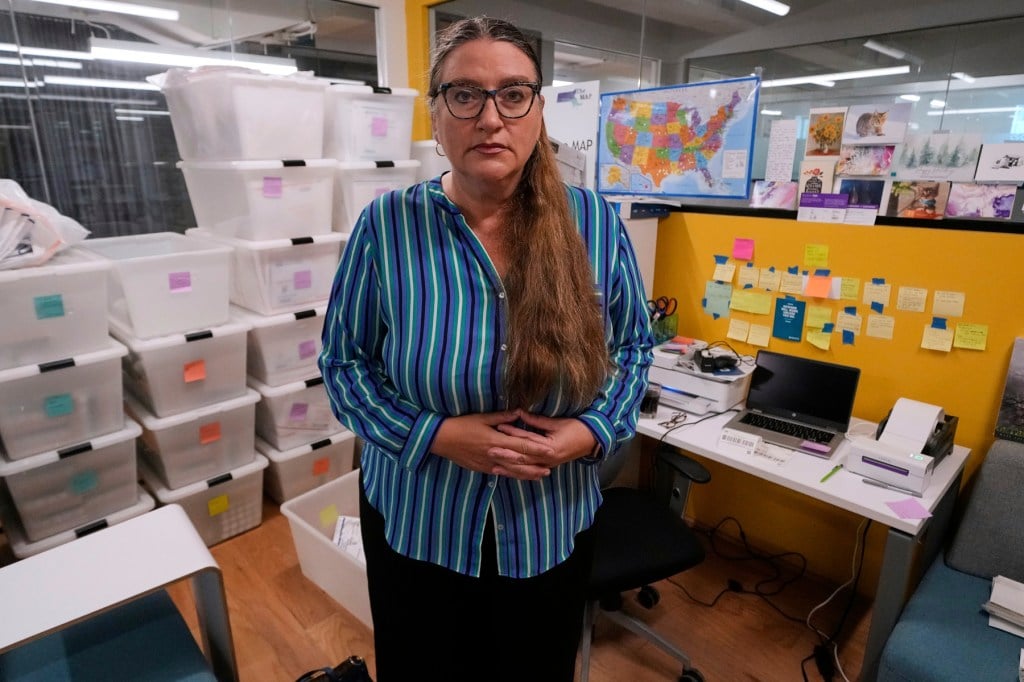Conservatives are testing a new argument in their legal efforts to end telehealth abortion: People using mail-order medication are being coerced into ending their pregnancies.
Two wrongful death lawsuits out of Texas, both filed this past month in federal court, allege that women were forced to take abortion pills prescribed by out-of-state telehealth providers.
In one case, a woman alleges that abortion medications were secretly mixed into her hot chocolate and caused her to miscarry. (The local police department investigated those allegations and said they were unfounded.) In the other, a man claims his girlfriend was forced to take medications by her mother and estranged husband. Both plaintiffs are represented by Jonathan Mitchell, a leader in crafting Texas’ anti-abortion policies and the state’s former solicitor general.
The suits represent a new phase in the broader effort to stop people in Texas and other states with abortion bans from having abortion pills mailed to them. Plaintiffs suggest that online health services come with insufficient safeguards, arguing that they have made it easier for people to fraudulently obtain medication, pretending to be someone else and then forcing pregnant patients into taking pills.
Previous efforts to block people from getting abortions have included a campaign spearheaded by the anti-abortion group Texas Right to Life to get aggrieved men to claim that abortions violated their rights as parents, as well as a civil suit in which one woman’s ex-partner targeted the friends who helped her get an abortion.
The latest lawsuits go after health providers. One of them names as defendants the telehealth organization Aid Access and its founder Dutch physician Dr. Rebecca Gomperts, in addition to the plaintiff’s alleged ex-partner. The second one targets California-based Dr. Remy Coeytaux, who the plaintiff alleges prescribed and mailed abortion medication to his girlfriend.
“You see abortion opponents realizing everyone believes they’re misogynistic or opposed to women, so there’s an effort to change the narrative,” said Mary Ziegler, an abortion law historian at the University of California, Davis.
Though few studies look at how often people are coerced into having abortions, existing data indicate the situation is quite rare — and certainly less common than the opposite phenomenon of patients being forced to stay pregnant against their will.
Abortion opponents, however, say the problem of coercion is ubiquitous, so much so that laws and courts should target the health care providers making medication available through telehealth. In a legislative hearing for a Texas anti-abortion bill, activist Mark Lee Dickson argued that the threat of coerced abortions — and telehealth’s role in facilitating them — justified specific laws going after medical providers, such as a bill making its way through the legislature that would let private citizens sue anyone who mails abortion pills into the state.
Data doesn’t support that narrative. One 2011 paper suggested that in most cases, partners were on the same page about a pregnant person’s abortion choice. In cases where a male partner disagreed, he was more likely to prevent someone from seeking an abortion than to compel one. And most people who get abortions appear to believe it is the right choice for them: Other research, including a 2020 study, shows that the vast majority of people who get abortions do not regret the decision.
Health care providers said they more often see patients navigating the opposite form of reproductive coercion: People are seeking abortions when their partners are trying to force them to stay pregnant.
“We know there’s a lot of violence against women and that takes different forms,” said Dr. Angel Foster, who runs the Massachusetts Medication Abortion Project, a telehealth practice that prescribes and mails abortion pills to people across the country, including in states with bans. “What we’ve seen more than anything else is our patients are making a decision to have an abortion so they’re not connected to a violent partner. We hear that every day from our patients, and we also hear from our patients whose partners are trying to force them to continue pregnancies.”
Foster said that her staff has seen men attempt to fill out forms asserting that they are seeking medication on behalf of women in their lives. These requests are rejected. Only people seeking abortion medication for their own use and who have certified that they will be the ones taking the pills are able to receive a prescription. If someone fills out the form saying they are seeking medication for their own use — but if something in their information seems off — Foster’s staff will engage in “Google sleuthing” to make sure they’ve represented themselves accurately, she said.
“When you care for 30,000 patients, if someone wants to willfully lie and manipulate the system, that is possible, but we’ve put a lot of screenings in place,” she said. “I feel really confident about the systems we’ve developed.”

(Charles Krupa/AP Photo)
Still, abortion services — and particularly telehealth providers — vary in terms of what precautions they take to ensure that patients seeking abortion are doing so of their own volition.
Standards set by the National Abortion Federation, a trade association for abortion providers, encourage clinicians to obtain “informed consent” from patients, ensuring that they have a chance to make clear that having an abortion is their choice. But clinics can set their own policies on how to accomplish that.
Patients seeking care through Aid Access — one of the largest telehealth abortion options in the country, focused on providing care for people living under abortion bans — fill out an intake form before receiving a prescription. The form specifically asks patients if they are being coerced to take medication. Patients must also attest that they are seeking medication for their own use.
But typically, patients don’t communicate in-depth with the prescribing physician, including by phone or email.
Gomperts, the founder of the organization and a defendant in one of Mitchell’s lawsuits, did not respond to multiple requests for comment. But one California-based doctor who prescribes through Aid Access said it would be “impractical” to speak in depth with every patient — whether by phone, email or video conference — adding that doing so would take much more time, in turn limiting how many physicians can care for. It could also alienate patients concerned about privacy. Aid Access sends medication to about 6,000 patients across the United States each month.

Support The 19th’s ambitious plans
As part of our three-year strategic plan, we’ll keep showing up in the way you’ve told us you need us to: as your relatable guide to an unequal nation. Your support will help drive our plan forward.
“You need to trust the person reaching out to you is the person seeking your services,” said the doctor, who asked that her name be withheld because of the lawsuits filed against her colleagues and her fear of being subsequently targeted. “The rate of coercion is extremely small, but not zero, and we just want to be able to help many, many people. We acknowledge that there will be some people that lie and coerce their partners.”
Often, an intake form can be a safe place for patients to share if they are being forced to seek an abortion, said Dr. Nisha Verma, an OBGYN in Atlanta who sees patients in person, which allows her to talk to them individually about their medical needs. Some patients she has seen have shared that a partner is trying to make them terminate their pregnancies. More often, she said, patients experiencing coercion are being prevented from taking contraception or forced to stay pregnant.
In her practice, she offers patients a chance to disclose any sensitive information in the intake forms and in one-on-one counseling. But even if a health provider only offers a form, that can be enough to screen for possible abuse or coercion, as long as clinicians make sure to follow up on any red flags, she said.
“You can argue that an intake form isn’t useless in terms of screening if that’s what a practice has capacity for, and making sure you’re following up on that,” she said.
But for some, that is a difficult tradeoff to make.
“We did have a major concern about people being able to just order medications like this online and receive them,” said Debra Lynch, a nurse practitioner who started her telehealth practice because she believed other shield law providers — including Aid Access — didn’t offer sufficient one-on-one counseling between patients and providers.
Her organization, Her Safe Harbor, prioritizes phone calls with patients so that staff can do their best to verify that patients are receiving medications for their own use and because they want to use them.
“Part of our regular screening process in our phone calls is to ask them, are they feeling any type of pressure to be doing this, how comfortable do they feel,” Lynch said. “Not that anyone has to justify an abortion for any reason. Even if it’s just because she wants it, it’s fine. We do want to make sure it’s their choice.”
Great Job Shefali Luthra & the Team @ The 19th Source link for sharing this story.





